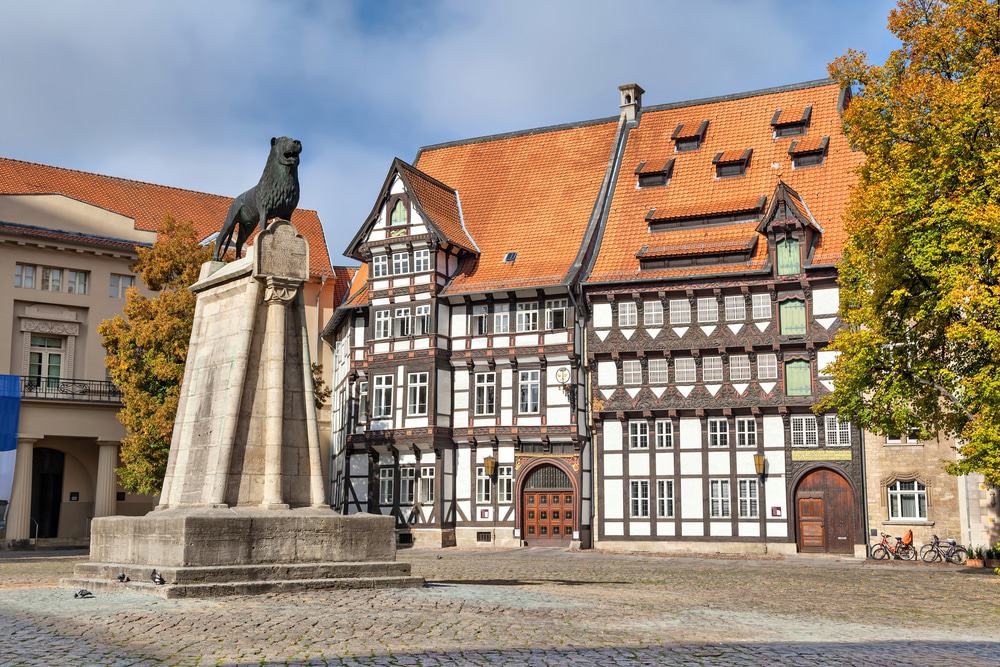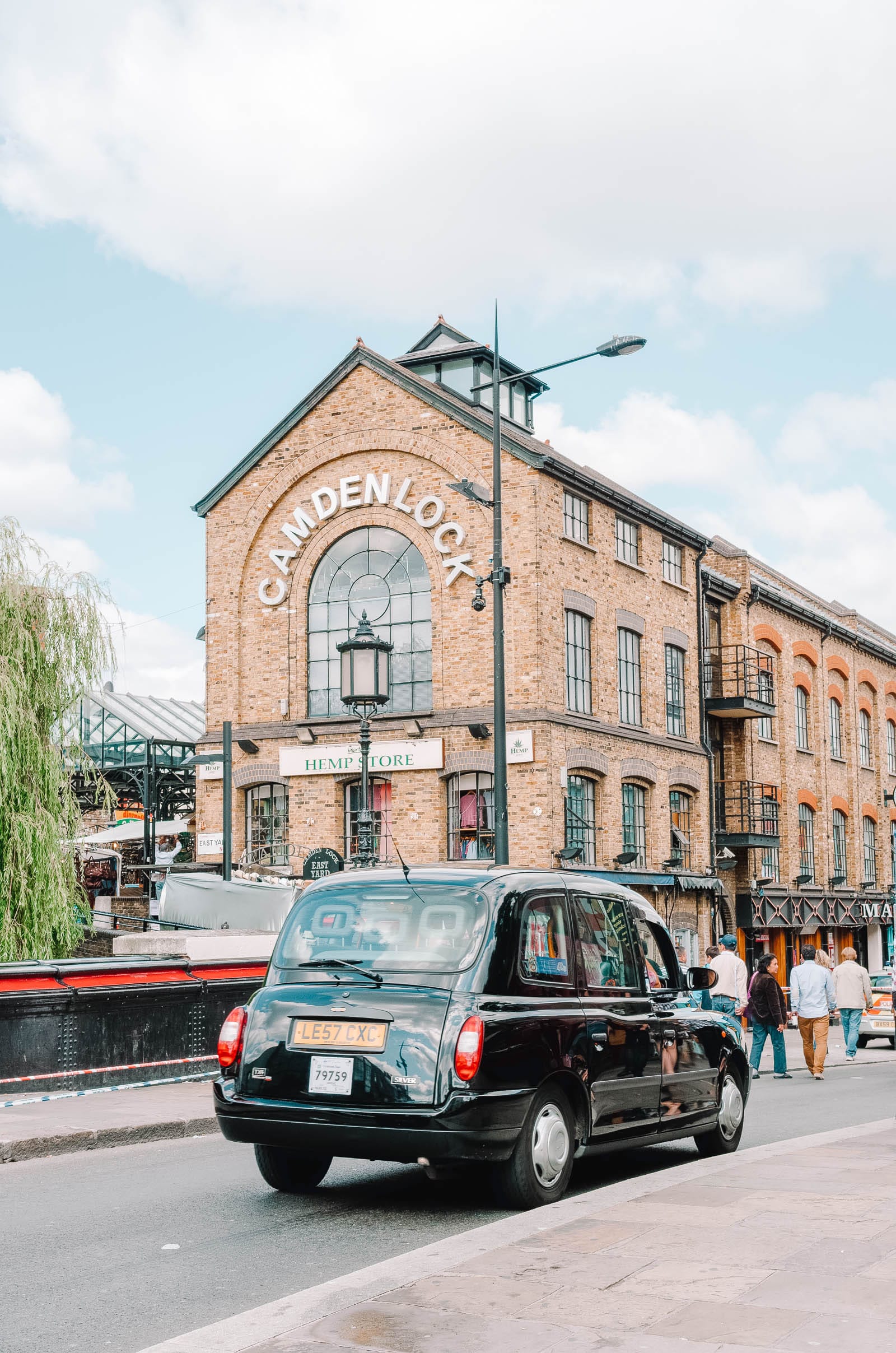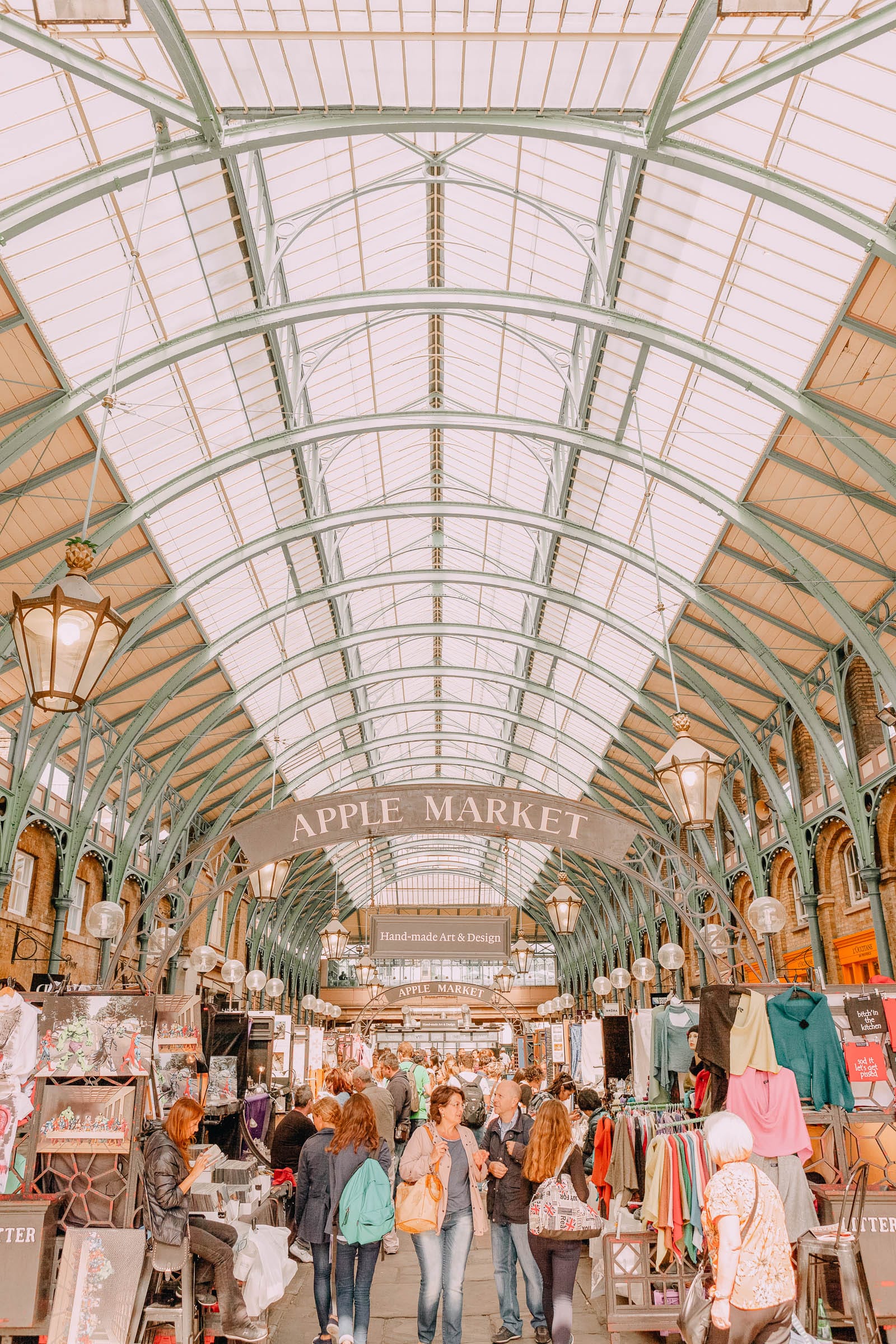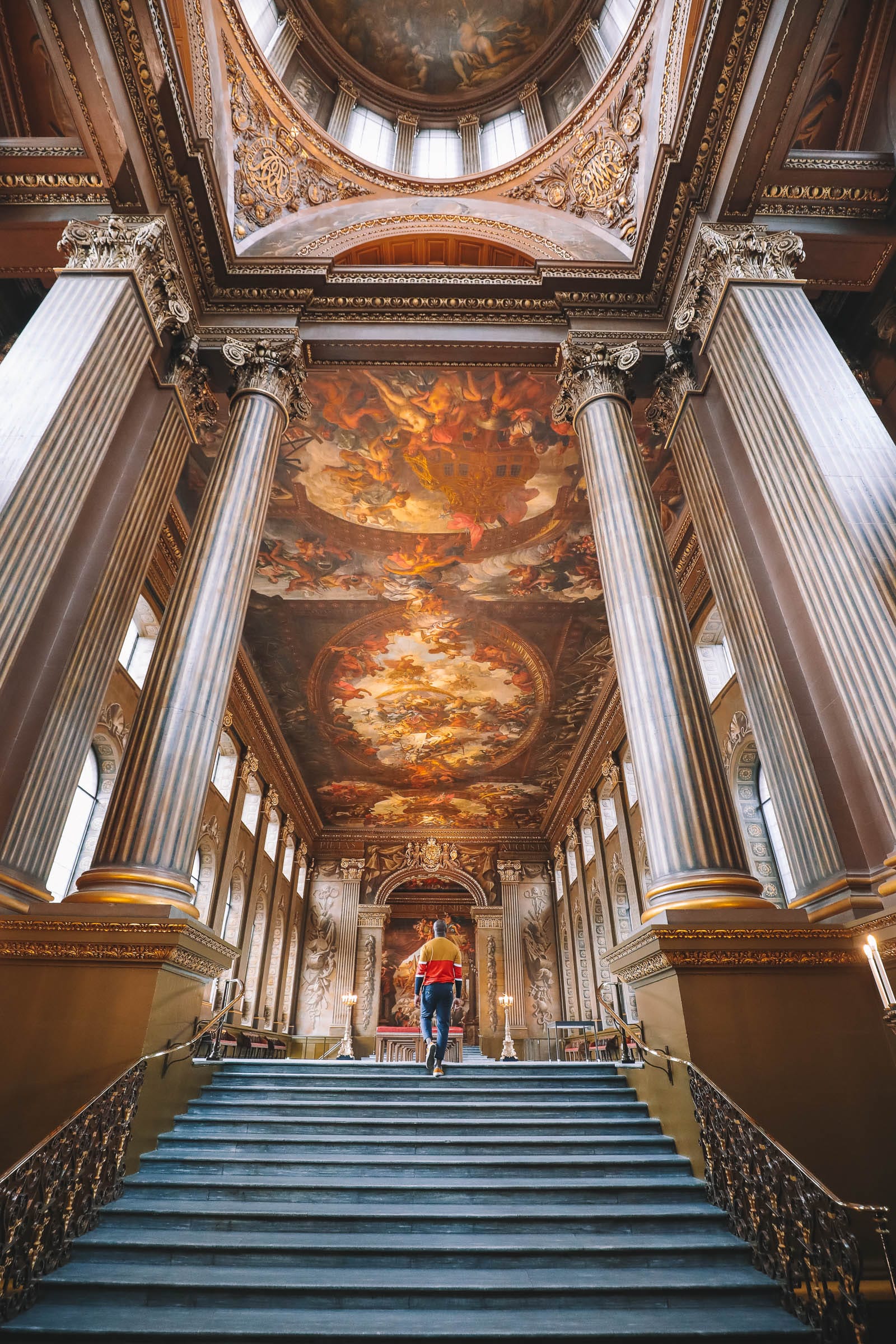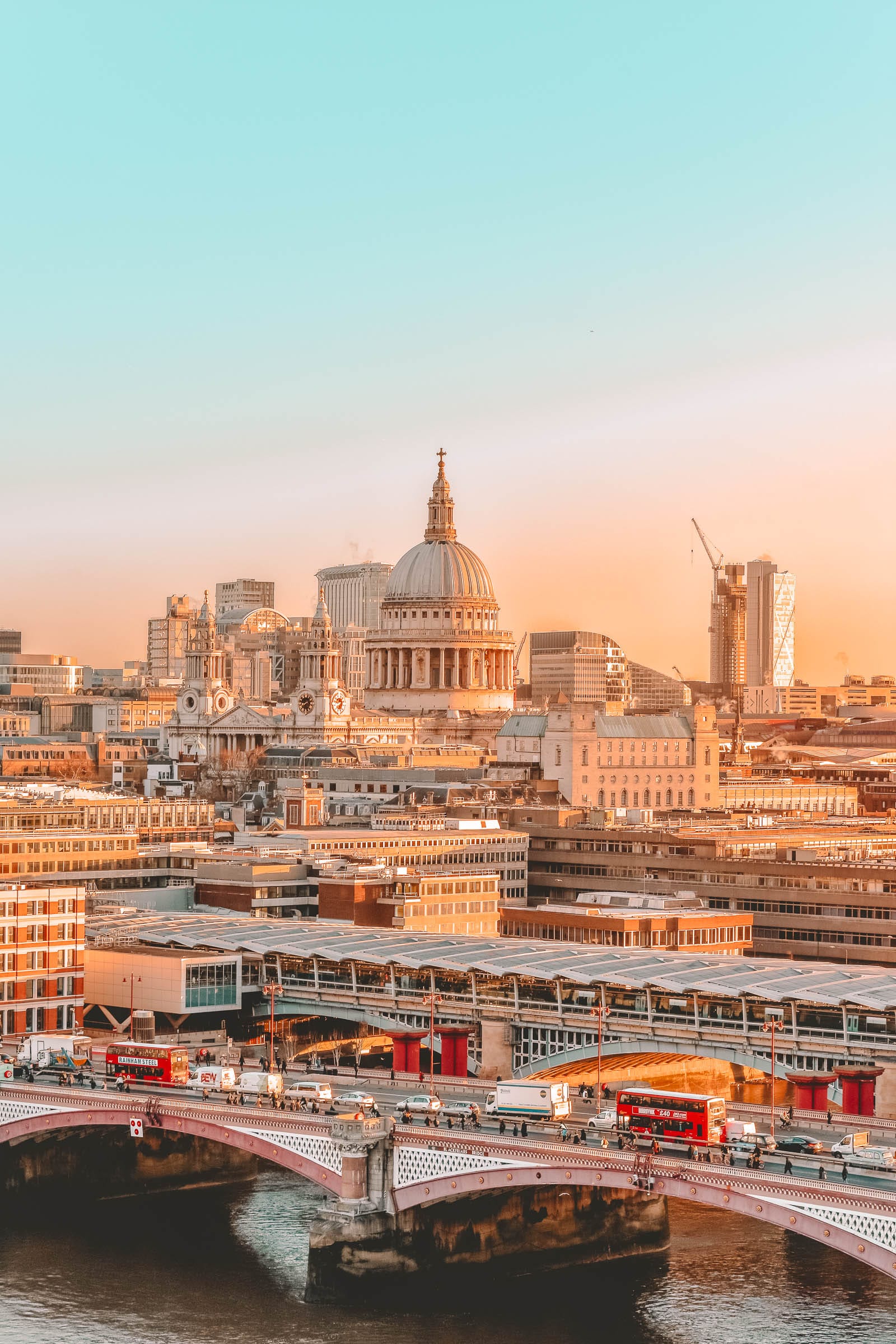Summary
- 1. Burgplatz
- 2. Herzog Anton Ulrich Museum
- 3. Dankwarderode Castle
- 4. St Blasii Cathedral
- 5. Brunswick Palace
- 6. Schlossmuseum Braunschweig
- 7. Braunschweiger Rathaus
- 8. Magniviertel
- 9. St. Magni Kirche
- 10. Happy Rizzi House
- 11. Schloss Richmond
- 12. Städtisches Museum
- 13. Altstadtmarkt
- 14. “Arche Noah” Zoo Braunschweig
- 15. Christmas Market
In Lower Saxony, Braunschweig (also referred to as Brunswick) is the largest city situated between Berlin and Hanover. The city was established by the Duke of Saxony, Henry the Lion, a member of the Welf Dynasty that remained influential in Braunschweig until 1918. During the Middle Ages, the city emerged as a significant trading center and was among the last nine remaining members of the Hanseatic League.
Despite suffering extensive bombing during World War II, Braunschweig’s monuments, such as Henry’s Romanesque palace and the captivating St. Blasii Cathedral, have undergone restoration. Additionally, a visit is not complete without paying tribute to the esteemed Brunswick Lion, a bronze sculpture from the 11th century, which stands proudly on Burgplatz.
Let us examine the most notable attractions in Braunschweig:
1. Burgplatz

Served as the seat of the Braunschweig Princes from the 9th century onwards, Burgplatz is surrounded by an impressive array of historic structures.
Adjacent to it are the cathedral, a 19th-century reconstruction of Dankwarderode Castle, a sequence of timber-framed houses, and the guild hall.
Pride of place here is a replica of the Brunswick Lion, a symbol of the city, which was cast in bronze by an unknown artist in the Romanesque style during the 11th century.
This replica has graced the space since 1989, while the original is housed in Burg Dankwarderode to safeguard it from environmental wear.
2. Herzog Anton Ulrich Museum

In the 17th and 18th centuries, Anthony Ulrich, Duke of Brunswick-Wolfenbüttel, amassed an impressive collection of Renaissance and Baroque art.
In 1754, forty years after his death, this collection provided the foundation for the Herzog Anton Ulrich Museum, recognized as the oldest museum on the European continent.
The gallery caters to aficionados of Northern European art from the 1500s and 1600s, featuring works by Albrecht Dürer, Lucas Cranach the Elder, Hans Holbein the Younger, Rembrandt, van Dyck, Rubens, and Vermeer.
The print room is particularly noteworthy, containing tens of thousands of drawings, engravings, and woodprints by artists such as William Hogarth, Raphael, Rubens, and Rembrandt.
3. Dankwarderode Castle

The Romanesque palace visible on Burgplatz represents a 19th-century reinterpretation of the 12th-century residence of Duke Henry the Lion.
The original structure was never dismantled but became functionally obsolete as a fortress due to urban expansion, leading to its reconstruction in the Renaissance style in the 17th century.
From 1887 onward, it was reverted to its Romanesque form through archaeological surveys, showcasing walls punctuated by semi-circular arched windows.
Inside, visitors will find the medieval collection of the Herzog Anton Ulrich Museum, alongside historic elements such as two fireplaces crafted from the rare reddish limestone known as Aquäduktenmarmor (Aqueduct Marble). In the Knappensaal on the ground floor, observers will encounter the original Brunswick Lion, which weighs 880kg and measures almost three meters in length.
4. St Blasii Cathedral

Commissioned by Henry the Lion in 1173, the construction faced delays due to his exile from Germany twice in the 1180s, resulting in both him and his wife Matilda being interred here before its completion.
Their shared tomb was crafted in the 1230s, and if one examines Henry’s effigy closely, a model of the cathedral can be seen in his right hand.
The architectural distinction between the church’s unadorned Romanesque central nave and the north and south aisles, dating from the 14th and 15th centuries, is evident through the twisted columns and rib vaults in the English Perpendicular style.
Throughout the nave and in the vaults of the apses, fresco-secco paintings from between 1230 and 1250 are on display. Notably, in the central apse, one can observe Christ Pantocrator positioned above the 12 apostles.
5. Brunswick Palace

This historical residence of the Dukes of Brunswick has witnessed three tumultuous centuries.
The initial structure burned down in 1830, and its successor would endure for only around a century.
From the 1960s until 2007, the site lay vacant, as the palace had sustained severe war damage and was demolished despite public protests from Braunschweig’s inhabitants, being replaced with a park.
However, the grand facade has been meticulously reconstructed in accordance with 19th-century Neoclassical designs.
Within this facade lies the Schloss-Arkaden, an upscale shopping center.
6. Schlossmuseum Braunschweig

Located behind the Neoclassical exterior is a museum curated on the reconstructed first floor of the northern wing.
A series of rooms, based on original designs, provides a vivid impression of the lifestyle and personalities of the House of Welf.
The chambers are adorned with authentic art and furnishings, complemented by additional displays regarding the dukes of Brunswick-Wolfenbüttel and their families.
Take a moment in the dining room of the Weißen Saal (White Hall), which is fitted with interactive computer stations that offer access to an archive of images and historical documents.
The Throne Hall boasts damask wallpaper and carpets based on original designs, with gilded furnishings that all date back to their removal from the palace in 1935.
7. Braunschweiger Rathaus

A brief walk from Brunswick Palace, situated in the Regierungsviertel, is the city hall, constructed in a Neo-Gothic style during the 1890s.
Its 61-meter Flemish-style belfry is visible throughout the city, including from Burgplatz and the Schlossplatz in front of the palace.
On the ground floor, a restaurant, the Ratskeller, has operated since the building’s completion, alongside a memorial dedicated to Braunschweig’s Sinti population, who were persecuted and killed during World War II.
From Monday to Friday, between 09:00-15:00, visitors can ascend the 161 steps to the top of the tower, which offers panoramic views of the city.
8. Magniviertel

One of Braunschweig’s oldest districts begins just a few streets east of Schlossplatz.
The Magniviertel features a network of cobblestone streets lined with charming half-timbered houses.
These streets are populated with restaurants and independent shops, and they open up to squares like Ackerhof and the churchyard of St Magni.
Located at Ackerhof 2 is the oldest half-timbered house in Braunschweig, which may well be the oldest in Germany.
The inscription on one of the beams reads “Anno d[omi]ni m cccc xxxii” (1432AD). During the summer, the square in front of the Magnikirche transforms with outdoor seating for restaurants and cafés.
9. St. Magni Kirche

One might assert that Braunschweig originated at this church, as its dedication certificate from 1031 recorded the settlement’s name for the first time.
The church underwent reconstruction in the mid-13th century, and suspended between the two octagonal Romanesque towers is the two-ton Magnusglocke, the oldest bell in the Braunschweig region, cast in 1335. The church suffered damage during an air raid in 1944, leading to the nave being reconstructed in a contemporary style post-war, while the western towers and choir were restored.
Noteworthy features include the baptismal font dating from 1468, the marble high altar created in the 1730s, and several solemn epitaphs and ledger stones adorning both the interior and exterior walls.
10. Happy Rizzi House

Located in the Magniviertel, this unique structure was designed by American pop artist James Rizzi.
The building consists of nine interconnected blocks and was erected on the northeast side of Ackerhof at the turn of the 2000s on a site that had remained vacant since the war.
One can understand the name “Happy” by observing the facade, which is adorned with vibrant, cartoon-like images of cheerful faces and recurring motifs of stars and hearts.
While this building serves as office space and is not open to the public, it offers an excellent opportunity for photographs, showcasing the whimsical integration of window openings within its eccentric facade design.
11. Schloss Richmond

In 1768, Duke Charles William Ferdinand commissioned the construction of a castle for his wife, Princess Augusta, who was the elder sister of Britain’s King George III. This property is set within picturesque English gardens along the banks of the Oker River and was named after the princess’s residence in Richmond, now part of London.
The exterior presents a pleasing sight, with a curved avant corps, Corinthian pilasters, and pediments all topped with a balustrade.
The palace has now transitioned to a private residence, so inquiries should be made ahead of time regarding tours of the state rooms.
Perched on a hill, the palace offers sweeping views of the beautifully landscaped grounds designed by Capability Brown, the renowned English landscape architect of the period.
12. Städtisches Museum

This museum reopened in 2012 after a lengthy renovation and is recognized as one of the most extensive municipal museums in the region.
Housed in a refined Neo-Baroque hall on Löwenwall, an oval square flanked to the east by the old moat of Braunschweig, the museum displays a rich collection of decorative arts and antiquities.
Antiquarians and decorative art aficionados should allocate a significant amount of time to explore the vast array of silverware, furniture, musical instruments, and porcelain from the Fürstenberg manufactory, including exquisite lacquer-work from the Stobwasser workshops.
Furthermore, the museum features an expansive collection that includes African ethnography, a coin collection numbering over 86,000 pieces, as well as art by the local 18th-century landscape painters Pascha Johann Friedrich Weitsch and his son Friedrich Georg Weitsch.
13. Altstadtmarkt

Set within Braunschweig’s Altstadt (Old Town), the Altstadtmarkt is a square that has existed since the end of the 12th century.
The assembly of historic structures surrounding the square has been impeccably restored, and each building tells its own unique story.
The Altstadtrathaus, located on the northwest corner, is the oldest surviving town hall in Germany, documented for the first time in the 14th century, featuring intricate High Gothic tracery on its facade.
On the south side, the half-timbered former customs house is connected to a warehouse where tailors from the Old Town stored their goods.
Just as in times past, a daily market persists in the square, hosting 50 stalls selling fresh produce, alongside two offering freshly prepared bratwurst and shish kebabs.
14. “Arche Noah” Zoo Braunschweig

This compact zoo commenced operations in 1964 and has since been redesigned to provide its animals with more spacious habitats.
While the variety of species may be less extensive compared to major city zoos in Germany, the focus here is on creating near-natural enclosures.
In total, there are 50 different species represented, including big cats like cheetahs and a Siberian tiger, South American bears, Barbary apes, and Golden-headed lion tamarins.
The reptilian offerings include five species of turtles and tortoises, while younger visitors will delight in the antics of playful common marmosets and Asian small-clawed otters.
15. Christmas Market

Braunschweig hosts one of Germany’s premier Christmas markets, attracting approximately one million visitors annually.
The key attraction is the historic ambiance of squares such as Burgplatz, where stalls are framed by the cathedral, Dankwarderode Castle, and various half-timbered houses.
The market has roots stretching back to 1505 and runs for an entire month, starting on November 29.
Over 150 artisan stalls offer handmade home decorations, wooden toys, jewelry, stuffed toys, and culinary delights from Germany and the Braunschweig region.
One particularly warming option is the Feuerzangenbowle, a blend of rum-soaked sugarloaf melted into mulled wine.
To complement that beverage, one might consider indulging in a meter-long bratwurst, baked camembert, or a sweet treat like Schmalzgreben, reminiscent of doughnuts.
